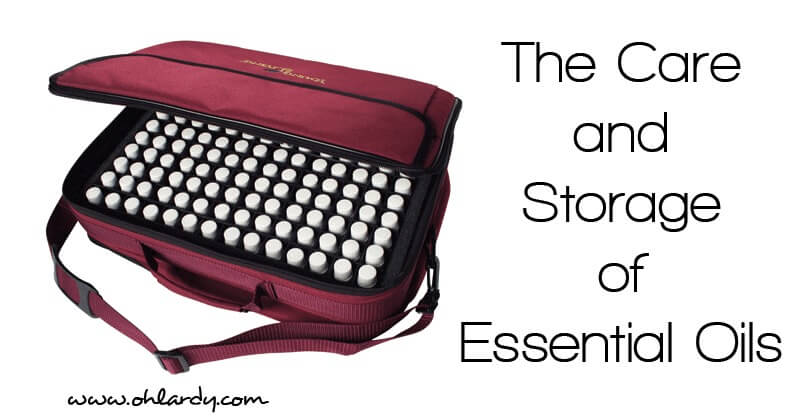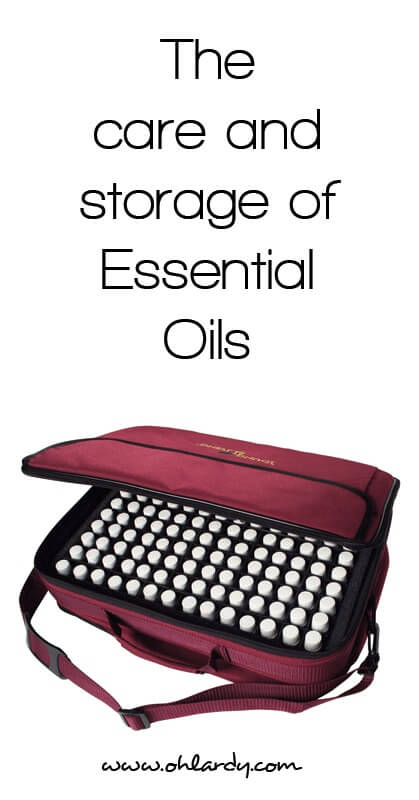The Care and Storage of Essential Oils
Oh Lardy! is a participant in the Amazon Services LLC Associates Program, an affiliate advertising program designed to provide a means for us to earn fees by linking to Amazon.com and affiliated sites.

By D. Rayburn
Preserving your precious essential oils requires a few simple steps. First you need to know the four basic categories your oils fall into.
- Pure steam distilled single oils and blends.
- Pure steam distilled oil blends in a carrier oil.
- Cold pressed or expressed oils.
- Absolutes
1. Pure steam distilled oils cover the largest selection of your essential oils These are obtained as steam passes through pressed plant material which unites with the oil. This is then collected where the oil and water separate. Subjecting the plant material to short periods of high heat is not a problem. If your oils get too hot, say in your car or at the beach, keep the lids closed and let them sit at room temperature for several hours before using. Storing your essential oils at normal room temperature (not above 80 degrees F.) allows them to retain their many therapeutic qualities indefinitely. If going camping or to the beach, you may want to place the oils in a baggie and then in your cooler.
2. Pure steam distilled oils mixed as a blend WITH a carrier oil such as olive, sesame, jojoba, or almond oil, etc. require a little more care. (Essential oils blended together without a carrier oil fall into the category outlined above in #1.) By their natural fatty nature (carrier oils are pressed from seeds), the carrier oil will begin to degrade even without excessive heat over time. If you plan to use your carrier oil blends within a year or two of purchase, and they are stored at normal room temperature, they should stay good. If you have “stocked up”, then store your extra blends in the refrigerator and use within two years. If you, like me, carry some of these blends with you, don’t leave them in your car. If you take your oils camping or to the beach, keep them cool in your ice chest. That being said, the essential oils themselves are partially a preservative, keeping fats/oils from going rancid.
3. Cold pressed or expeller pressed oils are the citrus oils pressed from the rinds of the fruit. These include: lemon, grapefruit, tangerine, bergamont, manderine and lime. These oils can be damaged at temperatures above 100 degrees F. and should be stored at room temperature. While it is fine to carry these oils and blends containing them with you, storing them in a hot car for long periods can cause their molecular structure to breakdown over time – not one trip to the grocery store. If you use your expressed oils within a year of purchase, they will serve you well. For long term storage, refrigeration is recommended.
4. Absolutes are a class of a few oils where the plants volatile liquid can not be extracted through steam distillation. These include jasmine, neroli, and onycha. While most companies use chemical solvents in which trace amounts remain in the finished product, (not only for these but other harder to distill plants as well), Young Living’s absolutes are processed using the state of the art carbon dioxide extraction technology and leave no remaining residue. These oils can be damaged at temperatures above 90 degrees F. Use the same care for these oils as you do for expressed oil (#3). Shelf life is one to two years, depending on temperature storage.
Light will destroy all oils, changing an essential oils chemical composition into a substance that no longer has any therapeutic value. For this reason essential oils should be packaged and stored in dark amber or blue glass bottles and kept out of direct sunlight.
Bottom line:
- Keep caps tightly closed when not in use.
- Do not store in direct sunlight.
- Avoid exposure to high heat and light for prolonged periods.
- Store at normal room temperature.
- Take a periodic (now is good) inventory of your oils and rotate and use what is getting older.
- Use your oils! It isn’t the one who dies with the most oils that wins, it’s the one who uses the most oils that lives.
Following these simple steps will insure your essential oils are always ready to serve you.
Are you curious to learn more about Young Living Essential Oils?
Pin it!

